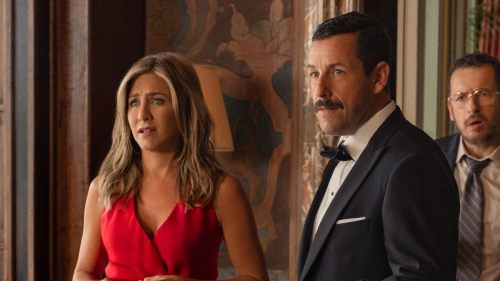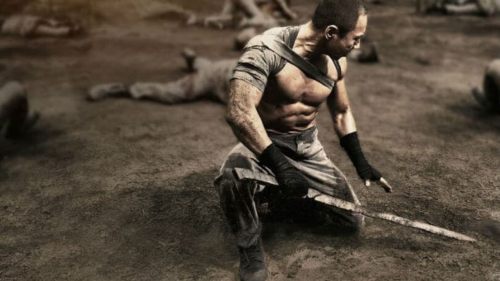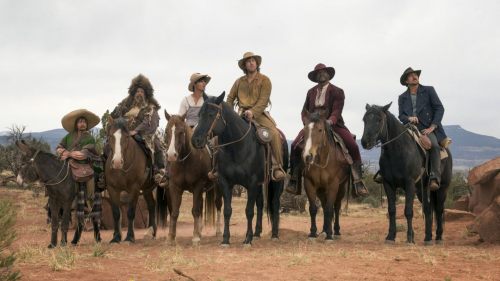THE OTHER SIDE OF THE WIND Review: The Rest Is History (Shot Missing)
Pauline Kael was one of our finest film critics, yet there were times when her self-proclaimed "gift for effrontery" came back to bite the (in)famous film writer. Such was the case in '71, when Kael launched a flagrant attack on Orson Welles via the incendiary essay "Raising Kane". In short, the uproarious piece of prose sought to promote writer Herman J. Mankiewicz as the true author of Welles’ defining masterwork, Citizen Kane. It's a rather loaded, in-your-face slice of cinematic analysis, essentially presenting her opinion as fact. "Raising Kane" was taken down – nearly line-by-line – in Robert Carringer's "The Making of Citizen Kane", but upon publication, deeply wounded the artist’s reputation and spirit, which he sadly commented upon by comparing personal damage control to picking up excrement with kid gloves: "the gloves keep getting shittier – but the shit doesn't get any glovier."
At the time, Welles was already persona non-grata in a Hollywood he'd helped mold with his innovative '41 tour de force. During the '60s, Welles had achieved critical accolades for making European art films (The Trial, Chimes at Midnight), and was considering a return to California with a self-reflexive takedown of the industry that'd exiled him (which would also work as a Fellini-esque examination of his own artistic soul). Sadly, Welles was broke, and no producer in their right mind was going to give the former maverick any money, so Orson had to rely on idiosyncratic funding sources, such as the shah of Iran’s brother-in-law (Mehdi Bushehri). Co-written with Wells' lover Oja Kodar, The Other Side of the Wind began production in '70, continuing off-and-on throughout the next six years, thanks to tax levies from the IRS and even the Iranian Revolution causing the film's finances to be locked in a Paris vault, far from its creator's grasp. Upon his death in '85, The Other Side of the Wind was partially finished, yet still required substantial editing to reach completion, as legal battles raged around it, threatening to suppress the film forever.
Enter producer Frank Marshall, Welles protégé Peter Bogdanovich, editor Bob Murawski, and streaming giant Netflix (who fronted the bill for the film’s finishing). Much like he had on Duke Mitchell's lost exploitation magnum opus, Gone With the Pope, Academy Award-winner Murawski (who is also the head of Grindhouse Releasing) used Welles’ notes, the original script (which reportedly changed daily), and over 100 hours of footage to try and assemble a cut of Wind that would make the late, great cinematic mastermind proud. Morgan Neville's companion documentary They'll Love Me When I’m Dead (also currently on Netflix) delves into the production of Wind with great detail, and at one point, Welles states, "the greatest things in movies are divine accidents.” Well, it seems that some sort of God may have intervened yet again in his creative process, as these surviving angels have overseen the restoration of this lost final work, bestowing upon cineastes an incredibly challenging, beguiling miracle of a movie that's as inscrutable as it is gorgeous to behold.
The Other Side of the Wind is essentially an editor's dream (or worst nightmare, depending on your perspective regarding DP Gary Graver's chaotically captured footage), that actually benefits somewhat from existing in limbo while so many advances in the cutting bay continued to be made. A faux documentary – assembled from various journalistic and film student "sources" – about the last day in the life of Hemingway-styled old school auteur Jake Hannaford (John Huston, standing in for Welles while also sort of playing himself), we're tossed smack dab in the middle of "history" as it's being made. These miles of celluloid were mostly filmed at Jake's 70th birthday, which is celebrated at a lavish bash thrown by his former muse (Lilli Palmer), while he’s in the midst of trying to complete a large-scale picture without studio backing (which is also titled The Other Side of the Wind). Certain tableaus resemble Jean-Luc Godard's swooning charge on the movie industry (Contempt), while others – such as a private screening room where a producer and Jake's lackey view ethereal dailies – seem ripped from Bob Fosse's All That Jazz (which obviously came well after Wind was shot and left for dead).
Huston looks like hammered shit, barely clinging to a heartbeat and ostensibly fueled by a rocket ship’s worth of self-loathing. In a crowded room, Jake's almost charming in a two-fisted cryptic shamanic sense. Yet behind closed doors, he's a slithering snake, vehemently guarding his own legacy against another generation of self-funded visionaries, violently shaking the Hollywood gates he helped erect. Hannaford’s Other Side of the Wind is possibly more impenetrable than the rapid-fire piece of faux non-fiction that it exists inside of, as Kodar silently wanders the landscapes of a pretty Michelangelo Antonioni put on, desperately in search of a dusty biker (Robert Random). The actor who rides that steel hog legendarily owes his life to Jake, who may or may not have stopped him from committing suicide years ago. However, he wants nothing to do with the old man, who harbors a fixation so strong he has a lifelike dummy made up by soon-to-be fired makeup artist Zimmer (Cameron Mitchell, who seems to have wandered in from another hot house comedy in progress) and delivered to the party.
Though he's rather boyishly handsome, Bogdanovich’s "apostle" Brooks Otterlake is possibly even more difficult to spend time with than the man he cribs from, as he's always hovering around Jake, like a strange sort of human remora. Everyone knows he's made an entire identity (not to mention financial killing) off of doing a pretty solid parrot of the hard man he never could be, including Otterlake, and Bogdanovich might be wrestling with his own relationship with Welles while trying to portray this dweeby leech. Meta details are woven into Brooks’ character – such as his conducting a series of interviews with Jake, much like Peter did with Orson – as he continuously makes it clear that he's the only one present not attempting to write a book about Hannaford (yet that never stopped him from trying and failing). It's another turn riddled with a weird guilty conscience, as if the actor (and Last Picture Show director) felt like some sort of accomplice in his teacher's odd onscreen self-immolation if he didn’t join in on this self-effacing three ring circus.
It doesn't seem like a coincidence that The Other Side of the Wind concludes at a drive-in, an arena that became Americana’s barren, disreputable refutation of the fashionable, gorgeous auditoriums of the Golden Age of Movie-going. This is where many of the finest New Hollywood players – some of whom (such as Dennis Hopper and Paul Mazursky) appear as guests at Jake’s party – had their first works play, churning out some cheapie for the likes of huckster kings like Roger Corman. RKO had given way to AIP, with David E. Durston's I Drink Your Blood (which was coincidentally distributed, years later, on Blu-ray, courtesy of Murawski's Grindhouse label) advertised on a tall marquee we glimpse out the window while riding the bus to Hannaford’s shindig with the rest of the below the line crowd. Drive-ins enabled exploitation of the art form Welles perfected at twenty-six, packing lots full with reels of cheap psychedelia that folks often fucked through in the backseats of cars. Perhaps it’s fitting that Netflix is the one to finally release the great artist’s swan song, as the company is also hoping to grab as many eyeballs as possible by offering up entertainment that's often deemed disposable background fodder for the “Chill” portion of each evening.
Murawski's guiding hand and admiration for the thin line that separates brilliance from exploitive self-indulgence is really the guiding light here; an instinct most evident in how he treats Kael's stand-in, Julie Rich (Susan Strasberg), who is constantly on the peripheral, fumbling to either obtain or decipher some form of truth in this mass of self-mythologizing. Though she's certainly still being seen through Welles’ (not to mention Bogdanovich's) lens, and thus belittled (both literally and visually) to being sort of a vexing, cowardly bully, there's still a strange sympathy for her plight, as shots often linger to obtain her pained reactions to these artists’ sharp barbs about her lack of courtesy on the page. Though it may be one of the few elements not strenuously in line with Welles’ intent, Rich’s place as a sort of passive but empathetically viewed antagonist reveals that more than one voice is on display in Wind’s final cut.
Make no mistake, The Other Side of the Wind is an essential cinematic experience for the devoted; lush and visually confounding, as it changes aspect ratios, film stock (from B&W to color), and POV, all at a moment's notice. The camera is almost never still, injecting a jittery sense of intrusion as the machine nervously keep us in the shoes of lens-slinging voyeurs, peeking into a God's world for just a second, and seeing just how chapped his ass truly is. While often mystifying, this wild experiment is never less than hypnotically compelling, laying bare one great creator's flaws and despairs regarding a world that seemingly had no need for genius any longer. Nevertheless, even his greatest critics were invited to Orson's last hurrah, but that didn't mean he was going to offer up any easy answers or apologies before drifting off this mortal coil, instead leaving a pile of wreckage for us mere mortals to sift through in his wake.
The Other Side of the Wind is currently in select theaters and on Netflix.



